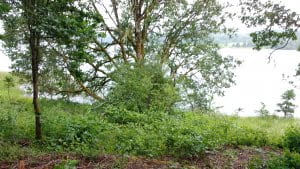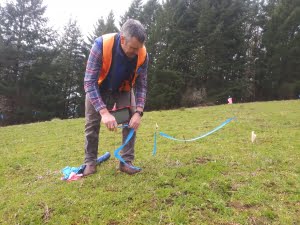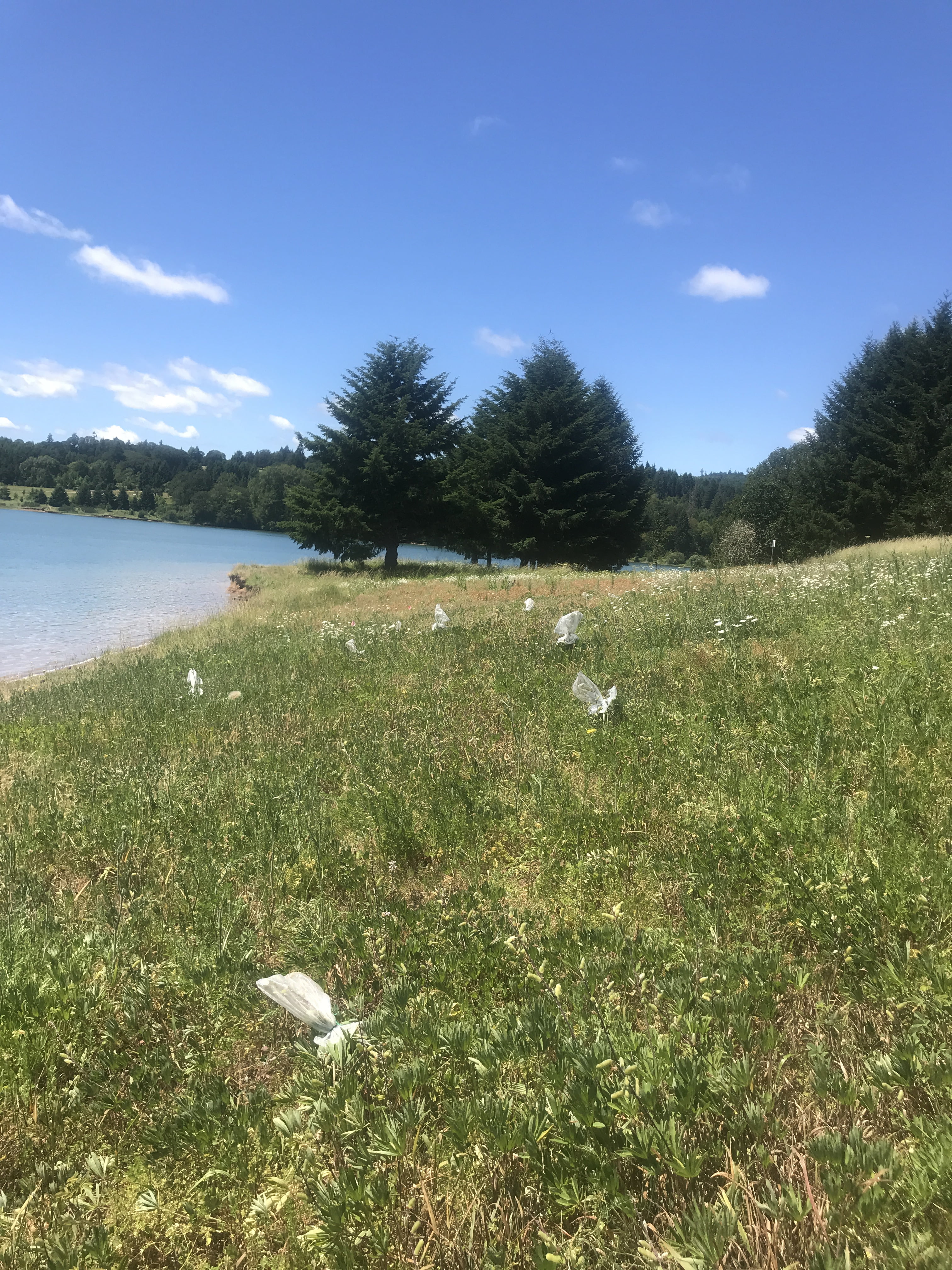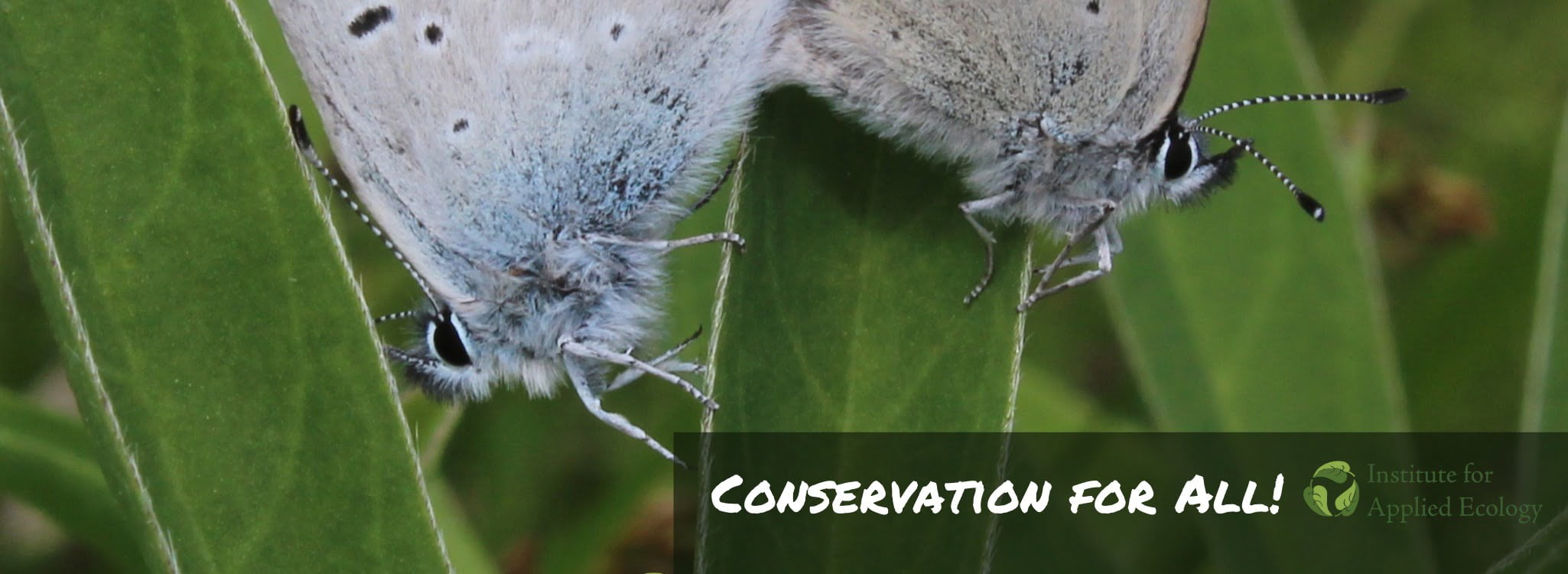
Restoration to the rescue: Providing plants for an iconic butterfly at Oregon’s Henry Hagg Lake
Nestled in the hills near the city of Forest Grove, Oregon’s Henry Hagg Lake is a reservoir prized for summer swimming, fishing, recreating and boating pursuits. The reservoir was completed in 1974 via an earthfill dam, and provides important irrigation for farms, flood control, and drinking water for surrounding communities. The lake and adjacent land are owned by the U.S. Bureau of Reclamation (BOR) and managed by Washington County Parks. The area is home to some of the largest known populations of Oregon’s endangered Fender’s blue butterfly (Icaricia icarioides fenderi) and its host plant, the threatened Kincaid’s lupine (Lupinus oreganus). Each spring, Fender’s blue butterfly populations are surveyed to assess how they are doing. At the close of the 2019 analysis, 3,425 individual butterflies were counted at this site – nearly 15% of the species’ total population.

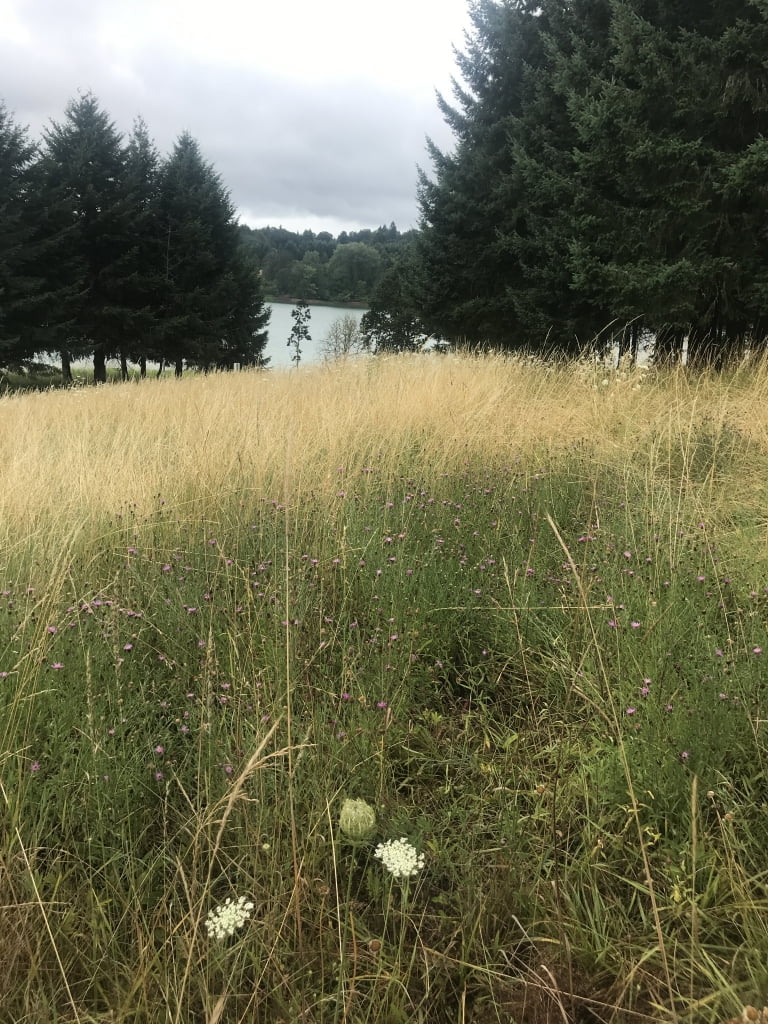
What can we do to help this endangered butterfly? IAE’s long history of partnering the USFWS, Bureau of Land Management, Army Corps of Engineers, Soil and Water Conservation Districts, local governments, land trusts and local private citizens in the recovery of Fender’s blue butterfly and Kincaid’s lupine made IAE a natural choice to plan and implement butterfly habitat restoration at Hagg Lake. In 2016, IAE and USFWS, with the support of Washington County Parks, set out to restore essential butterfly resources through establishing islands of nectar plants in three of the key population areas at Hagg Lake. Intensive work was completed over multiple years to beat back the invasive blackberry and Scotch broom that covered much of the area. This task is still ongoing! Where new bare ground are now available, seeds and plugs of the native species (such as Kincaid’s lupine, Oregon geranium, toughleaf iris, and Oregon sunshine) are being planted. Trees and shrubs are being reduced in key areas to create corridors between meadows that will facilitate butterfly movement and spread as more prairie habitat patches are restored. We are grateful to our team of contractors for their help, and specifically for help from our annual AmeriCorps volunteer teams! A total of 1,732 plants were planted in 2019 alone, with many pounds of native seed more native plants planned for 2020 and beyond.
We are thrilled to report that butterfly populations are growing as our restoration work progresses. This response highlights why projects like this one, which restore diverse, high quality habitat for Fender’s blue butterfly are critical across the butterfly’s range in the Willamette Valley. It also highlights why partnerships among landowners, managers, and the USFWS are so valuable for endangered species conservation.
If you go…
The trail around Hagg Lake is a great place for a hike or bike ride! If you go, please stay on the path to avoid trampling sensitive butterfly habitat. To learn the differences between the Fender’s blue butterfly and the very similar silvery blue butterfly, which is also present at Hagg Lake, check IAE’s blog on these species for photos.
IAE’s continuing work at Hagg Lake is funded by the Bureau of Reclamation through an agreement with the U.S. Fish and Wildlife Service.
Restoration
Research
Education
Get Involved
Contact
Main Office:
4950 SW Hout Street
Corvallis, OR 97333-9598
541-753-3099
info@appliedeco.org
Southwest Office:
1202 Parkway Dr. Suite B
Santa Fe, NM 87507
(505) 490-4910
swprogram@appliedeco.org
© 2025 Institute for Applied Ecology | Privacy Policy
